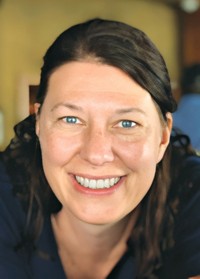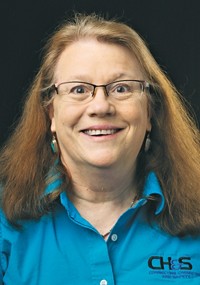Advertisement
Grab your lab coat. Let's get started
Welcome!
Welcome!
Create an account below to get 6 C&EN articles per month, receive newsletters and more - all free.
It seems this is your first time logging in online. Please enter the following information to continue.
As an ACS member you automatically get access to this site. All we need is few more details to create your reading experience.
Not you? Sign in with a different account.
Not you? Sign in with a different account.
ERROR 1
ERROR 1
ERROR 2
ERROR 2
ERROR 2
ERROR 2
ERROR 2
Password and Confirm password must match.
If you have an ACS member number, please enter it here so we can link this account to your membership. (optional)
ERROR 2
ACS values your privacy. By submitting your information, you are gaining access to C&EN and subscribing to our weekly newsletter. We use the information you provide to make your reading experience better, and we will never sell your data to third party members.
Safety
Assessing Safety
Survey characterizes the safety culture in academic laboratories
by Jyllian N. Kemsley
June 21, 2010
| A version of this story appeared in
Volume 88, Issue 25

The American Chemical Society Division of Chemical Health & Safety (CHAS) has released the results of an April survey aimed at evaluating the laboratory safety culture within hundreds of academic chemistry departments. Intended to establish a baseline of knowledge about laboratory safety programs, the survey asked departments about administrative issues such as access to chemical hygiene plans and emergency equipment, as well as training and work practices of faculty, staff, and students.
Certain aspects of the survey make it difficult to obtain a clear picture of academic safety culture. For example, some questions refer only to “students” without specifying undergraduate or graduate, and answers to other questions about chemical hygiene plans may be influenced by differing state requirements.
Nevertheless, responses to some questions paint a relatively positive picture. The survey showed, for instance, that most faculty, staff, and students receive some form of safety training. Also, 75.9% of respondents answered “agree” or “strongly agree” when asked whether their institution’s administration supports the development and enforcement of safety rules for laboratories.
Yet 8.9% of survey respondents answered “disagree” or “strongly disagree” to that question. And the survey indicated that 70.5% of faculty, 59.2% of professional staff, 52.1% of graduate students, and 20.1% of undergraduates work alone in laboratories “often” or “occasionally,” a practice that health and safety professionals generally consider unsafe.
The survey also showed that safety considerations aren’t usually included in the evaluation of faculty, staff, and students. “I think that’s a bit problematic in terms of the school helping to instill a culture of safety,” says Edward Miller, chair of the chemistry department at the State University of New York, Plattsburgh, and one of the survey developers. “There’s an old adage that if no one’s measuring it then it isn’t important,” he adds, acknowledging that his own performance assessments have never included safety.
The survey effort started at the August 2009 ACS national meeting in Washington, D.C. Miller attended the CHAS executive committee meeting there and asked if the division would consider looking into the state of safety in academic departments. “I had been thinking about all the things we’ve been struggling with over the years in my own department” in terms of fostering a safety-conscious environment, Miller says. “I was wondering how other departments were faring.”
With the blessing of CHAS, Miller teamed up with Ralph Stuart, secretary of CHAS and the University of Vermont’s environmental safety manager, to develop the survey. They were starting from scratch, Stuart notes, since, as far as anyone could tell, no survey of academic laboratory safety culture had ever been done before. Miller and Stuart wrote an initial set of questions, which were then reviewed by the CHAS executive committee as well as the ACS Committee on Chemical Safety.
Miller and Stuart contacted 922 chemistry department chairs for the survey and heard back from 45.4% of the schools. Of the respondents, 81.4% were department chairs as opposed to safety committee members or chemical hygiene officers.
Although the answers to the survey may look promising, the devil may be in the details. The survey responses indicate that the vast majority of students receive safety training, for instance. “It’s clear that training is being delivered,” Stuart says. “Now we need to think about how to collect information from the people receiving the training” to evaluate whether the training is effective.
In addition to collecting answers to set questions, the survey allowed respondents to comment on various questions or aspects of the survey. The submitted comments were mixed. Regarding institutional policies, a respondent at one school noted that “the university-level safety office provides little guidance and oversight,” while another described a program involving surprise lab inspections. Regarding student safety, comments varied from “students are poorly supervised” to “students are kicked out” for not following safety rules.
The survey results are available on the CHAS website (dchas.org, click on “Culture Survey”). The division is also soliciting comments on the results. That information will help determine the next steps. Focus groups are under consideration, as well as additional surveys to target and compare the responses of students and health and safety professionals. “The more feedback we get the better and more useful we can make it for people,” Miller says.
“I’m pretty excited that the conversation is going on,” he adds. “Safety is a tough subject sometimes to get people to focus on.”





Join the conversation
Contact the reporter
Submit a Letter to the Editor for publication
Engage with us on Twitter